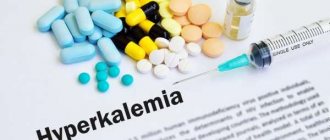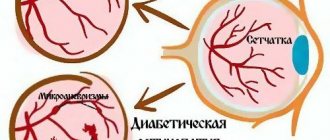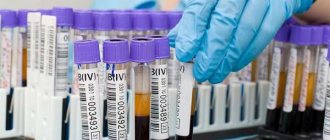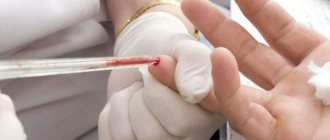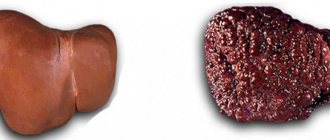What are eosinophils
Eosinophilic granulocytes (eosinophils) are a subtype of granulocytic leukocytes in the blood. They got their name due to the fact that they are stained with eosin dye (Romanov stain) in contrast to basophils (stained with basic dyes) and neutrophils (both dyes).
Also, eosinophils are distinguished by a bilobed nucleus, whereas in basophils it is not segmented, and in neutrophils it has 4-5 lobes. Eosinophils have the ability to penetrate the walls of blood vessels and move to damaged tissue or inflammation. They can absorb cells and small foreign particles, but their main advantage is the expression of fc receptors of the immune system.
In physiology, this is manifested by powerful cytotoxic properties in antiparasitic immunity. However, increased production of E-class antibodies sometimes leads to anaphylactic shock (an immediate allergic reaction). But they may play an anti-allergic role because they have the ability to absorb and bind histamine and then release it as needed.
In an allergic condition, the percentage of eosinophils in the blood increases. At the same time, they do not remain in the blood for long; when they enter the tissues, most of them remain there for a long time. The normal level is 120-350 eosinophils per µl.
Symptoms of elevated eosinophils in adults
1. If the level increases due to reactive diseases, a person may be bothered by anemia, the liver and spleen will become enlarged, weight will be lost sharply, fibrosis may form in the lungs, body temperature will rise, the area of the veins and arteries will become inflamed, heart disease will subsequently develop, and joints will ache.
2. When eosinophils increase due to worms, a person’s lymph nodes and liver become enlarged. General intoxication occurs in the body, the person suffers from nausea, loses appetite, suffers from severe headaches, and the body temperature may rise. Pain sensations appear in the muscles. When the larvae migrate, an asthmatic cough, pain in the chest area, and shortness of breath may appear. Then the pulse quickens, the eyelids and face swell, and a rash appears on the skin.
3. If eosinophils increase due to allergies, a rash may appear throughout the body, the face and eyelids may swell.
4. In case of gastrointestinal diseases, in which changes in the level of eosinophils are observed in adults, the intestinal microflora is disrupted, the body is not cleansed of toxic substances and waste, so nausea, vomiting may occur, and pain is localized near the navel. Then a convulsive state, diarrhea may bother you, sometimes symptoms of hepatitis are observed - the liver becomes enlarged and hurts, then jaundice appears.
5. In the case of lymphogranulomatosis, in addition to the increase in the level of eosinophils, the person weakens, pain in the joints, itching occurs, the spleen enlarges, then a cough appears.
Norms for adults and children
In the leukocyte formula, eosinophils appear from 0.5 to 5%. Although this value is not determined by gender, according to statistics, in women it can fluctuate due to the menstrual cycle. There are much more eosinophils in the first half than in the second. This specificity is used when assessing the action of the ovaries. In women and men over 55 years of age, the norm is 1-5.5%.
In children, the number of eosinophils does not change as they grow older. The absolute figure decreases as the total number of leukocytes decreases.
| Age | Deviation threshold | Eosinophils |
| 12 months | 0,05 – 0,7 | 1 — 5 |
| 4 years | 0, 02 – 0,7 | 1 — 5 |
| 11 years | 0,0 – 0,60 | 1 — 5 |
Although the content of eosinophils is characterized by low levels, their decrease and increase are of high importance in diagnosis. For example, in case of allergies, they significantly exceed the norm, and in the presence of infection in the body, they practically disappear.
During the day, eosinophils also fluctuate in small quantities - at night it increases, in the morning it decreases. The percentage of leukocytes remains unchanged.
Functions of eosinophils
An increased level of eosinophils is not a good sign, although these cells are very important for the body. In the body of women and men, eosinophilic elements perform the following tasks:
- protect against parasites;
- react to allergens;
- protect against thrombosis.
These elements do not act primarily in the bloodstream; they accumulate in tissues that come into contact with the external environment (skin, lungs, urinary tract, etc.), creating a protective barrier against infections.
Although an increased number of eosinophils in the blood is a warning sign, these cells are extremely important. Each element contains a very powerful enzyme that can dissolve almost any foreign protein; when it enters the blood, the eosinophil works to absorb the “enemy”. Then it completely dissolves its remains. The protective function of eosinophils in parasitic diseases is associated with this property.
With allergies, the level of eosinophils also increases. These blood components regulate the body's inflammatory response to allergens.
Eosinophils secrete substances that prevent platelets from sticking together, which helps prevent blood clots from forming. which can sometimes be life-threatening. .
Reduced eosinophil count. Causes and treatment
Eosinopenia is a decrease in eosinophils below normal, manifested by:
- With recent surgery.
- Severe intoxication of the body.
- During an infectious disease.
Eosinopenia can occur during treatment with corticosteroids (prednisone, cortisone, etc.), during pregnancy and labor, and with extensive burn damage. Physical overexertion or a state of shock during an infection leads to a decrease in the indicator, and during an acute inflammatory process there may be a complete absence of eosinophils in the blood.
“Treatment” of eosinopenia is a misleading concept, since this term only means that granulocytic leukocytes from the blood “leave” from the circulatory system to the affected tissues. Therefore, all efforts should be directed towards treating the underlying disease. Newly appearing eosinophils in the blood indicate the beginning of recovery.
Find out why your blood platelet count may be elevated. You can read about the main reasons for increased urea in the blood in this article. You can read about the causes of lymphocytosis at the link https://med-analyzes.ru/analizy-krovi/obshij/lejkocity/limfocity.html
Eosinophilia and its causes
Important! An increase in eosinophils is considered to be 7% of the total number of white cells. There is a mild form, in which tests show up to 10%. The average form is considered 10-15%, and everything above is considered severe.
When eosinophils are higher than normal, what does this mean? Definitely a pathological process occurring in the body.
The reasons for the increase in eosinophils in an adult are associated with the following factors:
- Allergy
. It is a clinical symptom of bronchial asthma and a number of dermatitis. - Invasive pathologies
- ascariasis, opisthorchiasis, giardiasis. - Infectious diseases and pathologies
of the digestive chain at the recovery stage. - Cancerous tumors accompanied by tissue destruction. Eosinophils react to breakdown products as foreign proteins.
- Respiratory diseases.
- Myocardial infarction.
- Eosinophils are elevated in adults and children if certain medications are used. Antibiotics, salicylates, sulfonamides, iodates have an allergic effect on the body, which provokes eosinophilia.
- Food allergy
. It develops when consuming certain, often seasonal, vegetables, berries, mushrooms, fish and seafood. - Allergic conditions during pregnancy, during menstruation
.
Important! Eating citrus fruits before donating blood for a standard test shows eosinophilia.
Increased content of eosinophils. Causes and treatment
Eosinophilia – increased content of eosinophils. This indicates the appearance of a foreign protein in the blood and manifests itself:
- For various allergic reactions.
- In the presence of parasites.
- For connective tissue diseases, vasculitis.
- For dermatological diseases.
- For some infections (syphilis, tuberculosis, scarlet fever).
- For blood diseases (lymphogranulomatosis, erythremia, chronic myeloid leukemia).
- When taking sulfonamides, antibiotics, adrenocorticotropic hormone.
- With hypereosinophilic syndrome - long-term (more than 6 months) high (15%) eosinophilia of unknown etiology, affecting the heart, kidneys, lungs, bone marrow, etc.
In children, eosinophil failure usually occurs for two reasons:
- in the presence of helminthic infestation,
- for allergic reactions.
In the first case, general malaise is accompanied by loss of appetite and moodiness. In the second, eosinophilia can be:
- Evidence of intrauterine infection.
- Reaction to complementary feeding with cow's milk.
- Reaction to medications.
An increase in eosinophils is not a disease, but only evidence of it. Therefore, treatment of eosinophilia itself is not carried out, but measures are taken to eliminate the root cause that provoked it.
Treatment methods for eosinophilia depend on the pathology, age of the patient, severity, concomitant diseases and general condition of the body. Sometimes it is enough to simply stop taking some medications. In any case, only a doctor can prescribe treatment.
Reasons for increased eosinophils in adults
2. In case of skin diseases - dermatitis, pemphigus, skin lichen, eczema.
3. Due to various allergic diseases - bronchial asthma, hay fever, rhinitis, atopic dermatitis.
4. In the case of eosinophilic cystitis, colitis of the newborn.
5. For blood diseases - leukemia, anemia, immunodeficiency.
6. The level of eosinophils increases in lung diseases - pneumonia, pulmonary infiltrate.
7. Due to autoimmune diseases - systemic lupus erythematosus.
8. The number of eosinophils has increased in gastric and intestinal diseases - ulcers, gastroenteritis, staphylococcal infections.
9. Due to rheumatic diseases - rheumatoid arthritis, granulomatosis, fasciitis.
10. The level increases with a malignant tumor, especially if a person has cancer of the genital organs, skin, thyroid gland, or uterus.
11. In an immunodeficiency state - due to a lack of immunoglobulin, lymphopathy.
12. Due to diseases such as congenital heart disease, scarlet fever, tuberculosis, in case of hypoxia, leukocytosis, lack of magnesium in the body.
13. The level of eosinophils rises due to the use of certain medications - papaverine, aspirin, diphenhydramine, sulfonamide drugs.
Treatment of elevated eosinophil levels
The first thing you need to do is find out why eosinophils in the blood have increased, the doctor will develop a special course of therapy. Medications are selected depending on the diseases that provoked an increase in eosinophil levels. Sometimes, on the contrary, it is necessary to abandon certain medications that could provoke an increase in the level of eosinophils.
So, when the level of eosinophils increases in an adult, this indicates an allergy, bacterial, or helminthic infection. Eosinophils are leukocyte cells. The increase may be caused by an allergic reaction, worms, or autoimmune processes. The level often increases with seasonal rhinitis, food allergies, and bronchial asthma. Changes in tests occur due to lichen, eczema, dermatitis, pemphigus. In some situations, eosinophils may increase if a person has blood poisoning or sepsis. It is important to diagnose the disease in time and undergo a course of therapy.
Eosinophilic leukocytes are produced in the bone marrow from a single precursor cell. The production of this population is accelerated by the release of interleukins IL4, IL5 by T lymphocytes.
Mature eosinophils are stained with aniline dyes (eosin), which is why they get their name. The size of the mature cell form is 12 – 17 microns.
Life cycle
- population formation occurs in the bone marrow within 34 hours;
- mature forms enter the bloodstream, where they remain for about 2–10 hours;
- then they migrate to the submucosal spaces - the skin, mucous membranes of the intestines, respiratory tract, oral cavity, paranasal sinuses;
- function in tissues for 8–10 days.
Eosinophils are concentrated in increased quantities in skin tissues and mucous membranes, where they are contained 100 times more than in the blood. They are found in moderate quantities in the tissues of the spleen, mammary glands, thymus, lymph nodes, and uterus.
The general circulation of blood contains no more than 1% of all human eosinophilic leukocytes.
Structural features
Eosinophil carries on its surface receptors (antigens) involved in immune processes. The cellular cytoplasm contains granules filled with enzymes, which, if necessary, are delivered to the site of inflammation and released into the extracellular space.
Surface antigens (AGs) of eosinophilic leukocytes are capable of interacting with immunoglobulins IgG, IgE, components of the blood complement system C3, C4.
The rapid increase in the concentration of eosinophils at the site of inflammation is explained by their ability to:
- to phagocytosis - the ability to “devour” small particles of destroyed cell walls of microorganisms;
- to chemotaxis - directed movement into the site of inflammation under the influence of the eotaxin protein, monocyte chemotaxis proteins, and lymphocyte chemotaxis proteins.
Under the influence of chemotaxis proteins, eosinophils can accumulate in huge quantities at the site of inflammation, as, for example, in allergies. Elevated eosinophils indicate that pathogenic microorganisms, antigenic complexes, and foreign toxic proteins are present in the blood.
Eosinophils are responsible for the reactivity of the immune system; they phagocytose antigen-antibody immune complexes formed during immune reactions in the blood, which serves as a way to regulate inflammation in the lesion.
Due to surface receptors and active compounds contained in cytoplasmic granules, as well as the ability for phagocytosis and chemotaxis, the eosinophil:
- is a factor of local immunity of mucous membranes - it does not allow the penetration of foreign antigens into the general bloodstream, surrounds and destroys them in the submucosal spaces;
- enhances the immediate immune allergic response, which is manifested by Quincke's edema and anaphylaxis;
- participates in a delayed-type allergic reaction - increased levels accompany bronchial asthma, hay fever, drug intolerance, atopic dermatitis;
- controls the work of basophils and mast cells, neutralizes the histamine released by them;
- participates in autoimmune processes, which manifests itself, for example, in cold urticaria;
- kills helminths and their larvae.
Treatment
Treatment of eosinophilia is primarily etiological
The necessary treatment is prescribed only after identifying a disease that has affected the blood. Depending on the cause, antiparasitic drugs, antibiotics, antivirals or antihistamines may be prescribed. In some cases, the patient requires surgical intervention and further treatment. Sometimes, to normalize the condition, it is enough to simply adhere to the correct work and rest schedule and follow the recommendations for a healthy diet.
Diagnostics
Complete blood count includes determination of eosinophils
Diagnosis of changes in the leukocyte formula is carried out using a blood test. It can be prescribed according to indications or carried out during a routine medical examination in children and adults. Determining the indicator of protective cells is one of the stages of a general blood test.
The material for research is taken from a finger. It must be taken on an empty stomach. The day before donating blood, it is important to completely eliminate smoking, alcohol consumption, physical overload and stress. If medications are taken, the doctor is informed about this. The result of the study is ready in a day. The attending physician deciphers it. It is impossible to make a diagnosis using just one blood test, since an increase in protective cells in the blood is observed in many pathologies, and therefore it is important to undergo a full examination.

